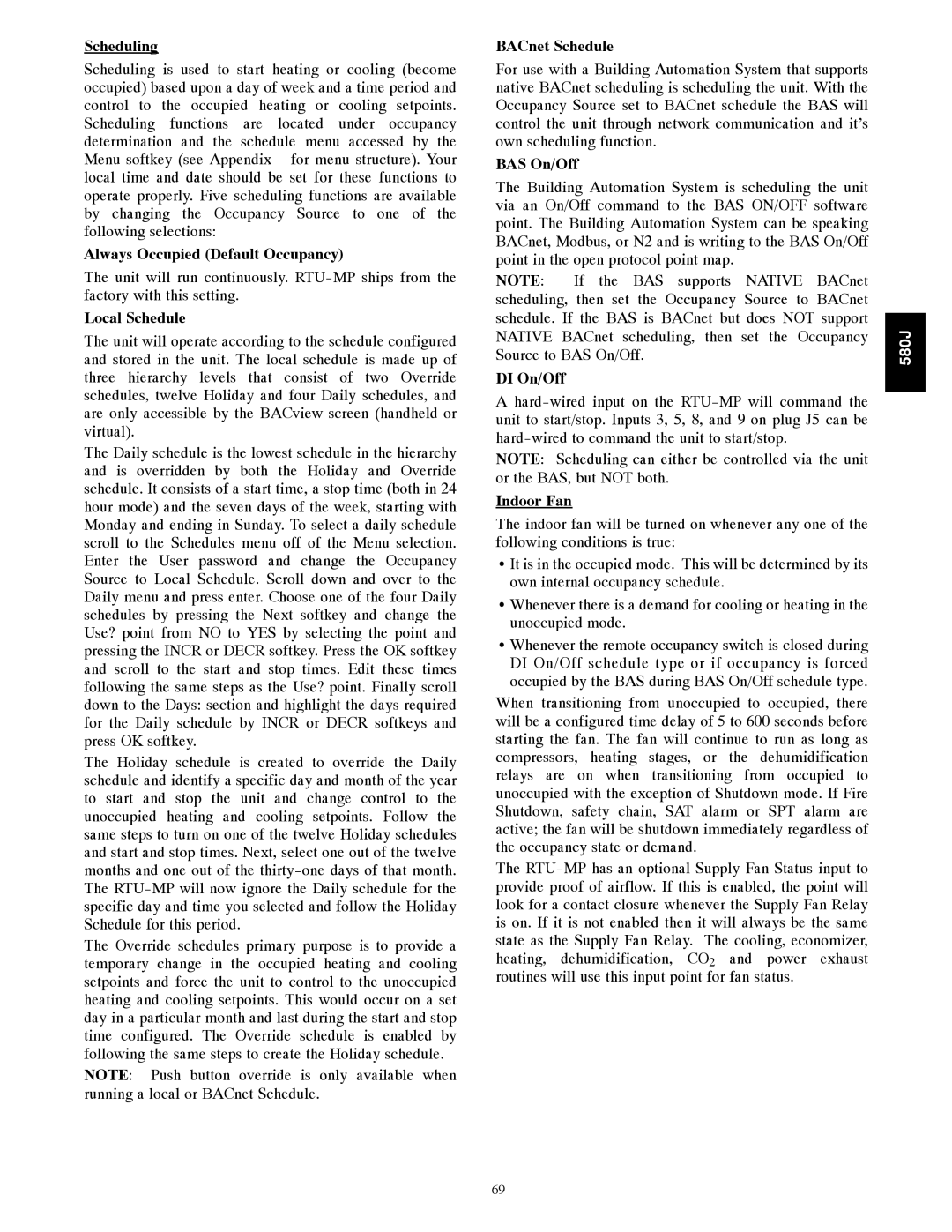580J*08--14D, F specifications
The Bryant F,580J*08--14D is an advanced heating and cooling system engineered for optimal performance and energy efficiency in residential and commercial applications. This innovative unit is designed to provide exceptional climate control while reducing operational costs, making it an ideal choice for those seeking reliable HVAC solutions.One of the standout features of the Bryant F,580J*08--14D is its versatile heating and cooling capabilities. This system employs a two-stage compressor, which allows for precise temperature regulation and improved energy efficiency. This dual-stage operation ensures that the system can adapt to varying environmental conditions, providing enhanced comfort without excessive energy use.
The system is equipped with advanced inverter technology, which enables smoother operation and quieter performance. This technology adjusts the compressor speed based on the heating or cooling demand, leading to increased efficiency and reduced energy consumption. Additionally, the inverter system contributes to less noise during operation, creating a serene indoor environment.
The Bryant F,580J*08--14D also features a user-friendly thermostat that allows for easy temperature adjustments and scheduling. This smart thermostat is compatible with mobile devices, enabling users to monitor and control their HVAC system remotely. This feature provides added convenience and ensures that the system is operating efficiently, even when homeowners are away.
Energy efficiency is a hallmark of the Bryant F,580J*08--14D. The system meets and often exceeds ENERGY STAR® standards, making it one of the more eco-friendly options available in the market today. By utilizing energy-saving technologies and innovative designs, the system helps to lower utility bills and reduce the environmental impact.
Durability and reliability are key characteristics of the Bryant F,580J*08--14D. Constructed with high-quality materials and components, this unit is designed to withstand the rigors of changing weather conditions while maintaining consistent performance. Additionally, it comes equipped with a robust warranty, providing peace of mind for users investing in this heating and cooling solution.
In summary, the Bryant F,580J*08--14D is a top-tier HVAC system that boasts advanced technologies, exceptional energy efficiency, and user-friendly features. Its combination of reliable performance and modern conveniences makes it a standout choice for anyone looking to enhance their home's or business's climate control system, providing comfort and savings for years to come.
